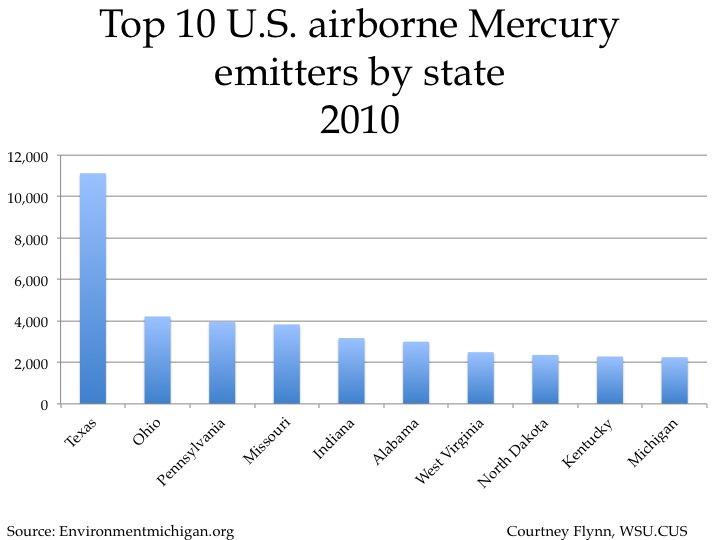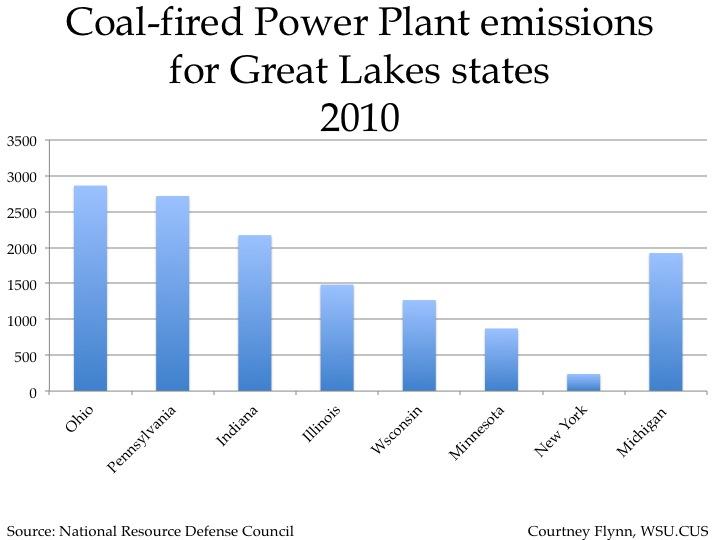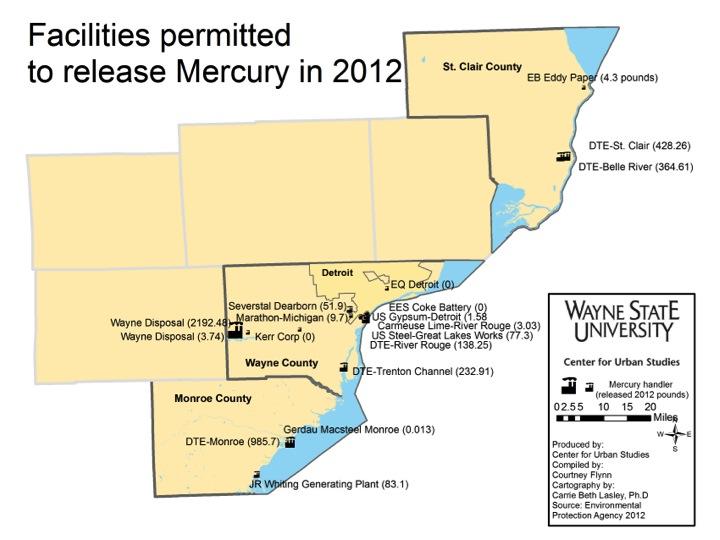According to the Agency of Toxic Substances and Disease Registry, exposure to mercury, a naturally occurring element, can cause gastrointestinal, developmental, neurological, ocular, and renal damage. While the most common way humans are exposed to mercury is through consumption of fish and shellfish, we are also exposed to it when coal is burned. According to the Environmental Protection Agency, the largest human cause of mercury emissions comes from burning coal. With this in mind, the EPA issued a mandate for mercury emissions from coal-fired power plants to be limited by 2015. By 2016 the mandate is to be fully implemented and mercury emissions are to be reduced by 90 percent, according to the EPA.

As presented by EnvironmentMichigan.org, above the top 10 mercury emitters by state (this includes coal-fired power plants and other emitters) are shown from 2010. Michigan came in at number 10, with facilities emitting 2,253 pounds of mercury into the atmosphere. Ohio, Indiana, and Pennsylvania were the three Great Lakes States that came in above Michigan. Texas was the state with the overall highest mercury emissions at 11,127 pounds.

Unlike the previous chart, this one shows the 2010 emissions for coal-fired power plants. In parallel with the first chart, Ohio, Indiana and Pennsylvania’s coal-fired power plant emissions were higher than Michigan’s.
In 2010, according to the Natural Resources Defense Council, Michigan based coal-fired power plants emitted 1,924 pounds of mercury into the air. In comparison, the following Great Lakes states produced these emissions from coal-fired power plants: Ohio power plants emitted 2,865 pounds, Pennsylvania emitted 2,720 pounds, Indiana emitted 2,174 pounds, Illinois emitted 1,484 pounds, Wisconsin emitted 1,269 pounds, Minnesota emitted 873 pounds and New York emitted 239 pounds.

The map above displays 2012 mercury releases for the 15 facilities in southeast Michigan that are permitted to release mercury. According the EPA, a chemical release means the material is emitted into the air or water or placed in a type of landfill for disposal.
DTE, released a total of 2,127.8 pounds of mercury from its five power plants in the region. The largest contributor to mercury releases from power plants was the DTE Monroe Power Plant at 985.7 pounds. The St. Clair DTE Power Plant released 426.26 pounds of mercury and the Belle River DTE Power Plant, just a few miles south of the St. Clair location, released 364.7 pounds of mercury in 2012. The Trenton Channel DTE Power Plant released 232.91 pounds and the River Rouge location released. 138.25 pounds.
The largest mercury releaser in 2012 was not a coal-fired power plant,
but a hazardous waste landfill: Wayne Disposal had the highest mercury releases on a single permit, 2,192.48 pounds. The second largest mercury release site in the region, The Monroe power plant released 965.7 pounds of mercury in 2012, which is higher than what the Natural Resources Defense Council reported was emitted in 2010. Although information from 2010 was presented above, this map offers information from 2012 to show the most recent emissions. This same data was not readily available for 2010 and 2011.